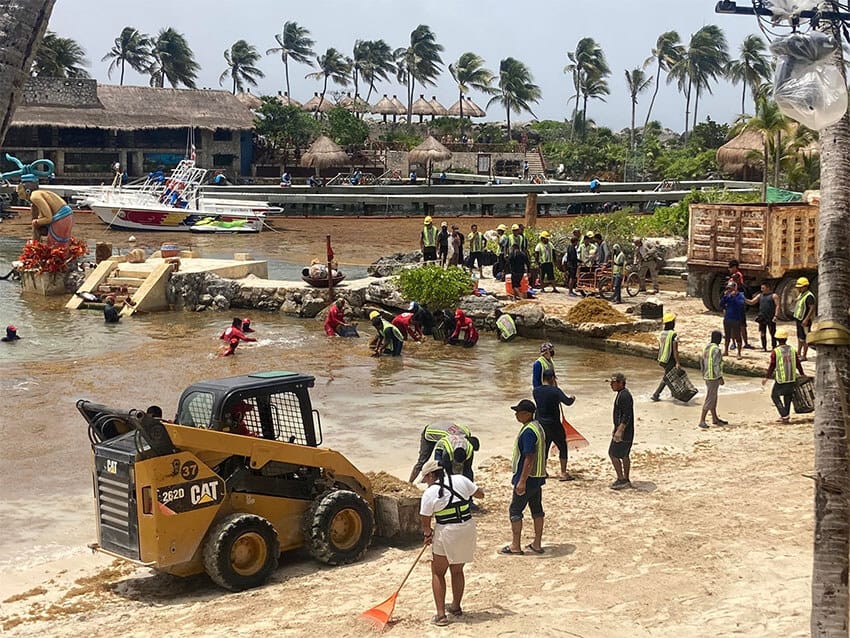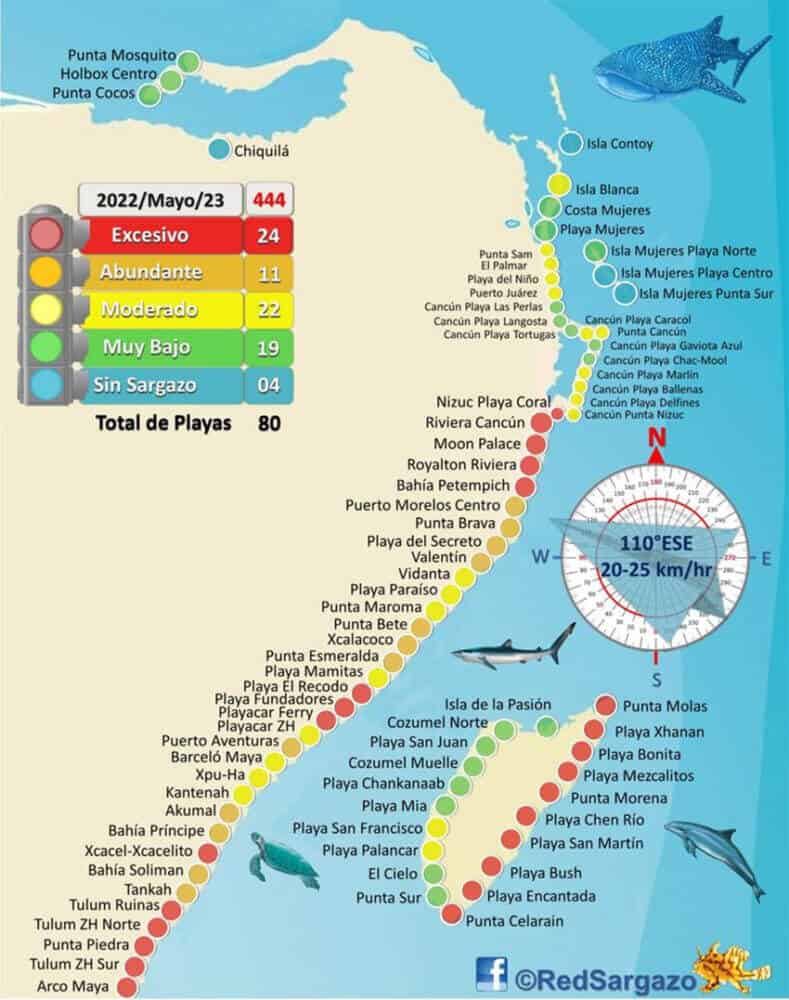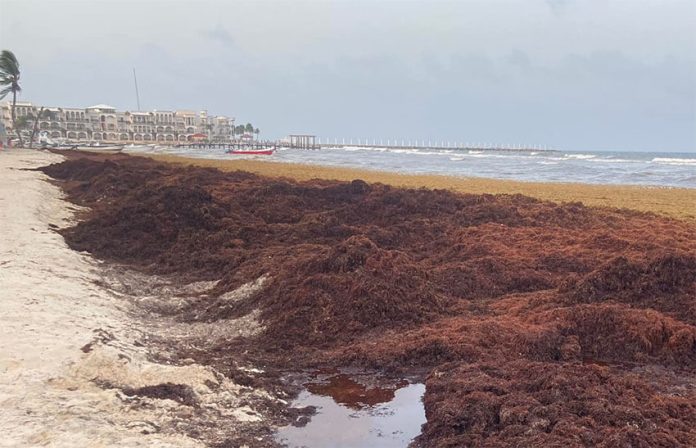The number of Quintana Roo beaches plagued by excessive quantities of sargassum declined to 24 on Monday after reaching 50 over the weekend.
The Quintana Roo sargassum monitoring network’s latest map shows that some beaches in the Cancún, Playa del Carmen and Tulum areas and all those on the east coast of Cozumel are covered with excessive amounts of sargassum.
There are 11 beaches with abundant quantities of the seaweed and 22 with moderate amounts. An additional 19 beaches have very low amounts while four are sargassum-free.
The maps published by the monitoring network on Saturday and Sunday both showed 50 beaches with excessive amounts of sargassum, which washes up on the Quintana Roo coastline annually over a period of several months. The network said it was the first time in four years that so many beaches were affected by excessive quantities of the weed, which emits a foul odor when it decomposes.

It said Sunday that “moderate to very intense” quantities of sargassum are expected this week and published photos showing massive amounts of the weed on Quintana Roo’s famous white sand beaches.
Among the beaches that turned brown due to a sargassum invasion were those that adjoin the Xcaret and Xel-Ha theme parks. The beach areas of both parks were closed Sunday.
The monitoring network said that the excessive quantities that reached the coast over the weekend indicated that this sargassum season will be an intense one.
“The situation in terms of the quantity and volume of sargassum that will arrive on our beaches this year will be critical and places the whole marine and coastal ecosystem as well as tourism activity at risk,” it said on Facebook, noting that tourism is the main driver of the Quintana Roo economy.
“Taking more drastic measures at a greater scale to combat sargassum is urgent. Reconsidering the strategy to combat sargassum is a priority. The actions taken up to today haven’t been enough,” the network said.
Esteban Amaro, a marine biologist and director of the network, said last month that it has been clear for years that the anti-sargassum strategy doesn’t work.
“Over and over again the same deficiencies have been on display. For example, we’ve already seen that the barriers don’t work because the sargassum goes over [them]. They’re barriers designed for the contention of oil spills,” he said.
The navy uses sargassum-gathering vessels to remove the seaweed before it reaches the shore, but the amount extracted is dwarfed by the quantity that washes up on Quintana Roo’s beaches every sargassum season.

Instead of having an anti-sargassum strategy whose central component is removing the weed from beaches, efforts should be focused on installing longer and more robust barriers at sea, Amaro said. Such barriers would assist the navy’s collection efforts, he added.
The monitoring network chief has said that large quantities of sargassum are the result of an increase of nutrients in the sea and higher than normal water temperatures due to climate change.
The Riviera Maya branch of the Business Coordinating Council (CCE) agrees that more barriers could be part of the solution to the problem.
“We’re going to work with experts and organized society so that they help us … [with] this possibility,” said local CCE president Lenin Amaro Betancourt.
He acknowledged that existing barriers and efforts to remove sargassum from beaches with machinery have been insufficient.
Amaro asserted that collecting sargassum at sea in collaboration with Caribbean countries, the United States and even European nations is also required. Much of the weed originates in the Sargasso Sea, which is part of the Atlantic Ocean.
“We’ve been asking for support since 2016 but there is no real interest … in solving the problem,” Amaro Betancourt said.
President López Obrador in 2019 put the navy in charge of combating the sargassum problem, but its efforts over the past three years have done little to stop the arrival of the weed on the Quintana Roo coastline.
The president has downplayed the seriousness of the problem, saying once that the amount of sargassum collected on Quintana Roo beaches every day is less than 3% of the 13,000 tonnes of trash collected daily in Mexico City.
